Related Research Articles
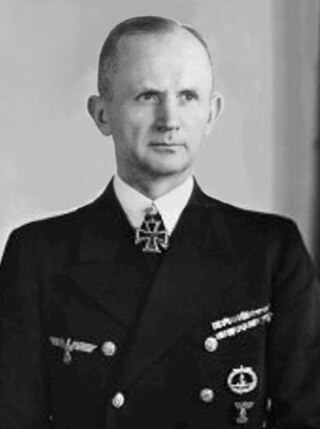
Karl Dönitz was a German admiral who briefly succeeded Adolf Hitler as head of state in May 1945, holding the position until the dissolution of the Flensburg Government following Germany's unconditional surrender to the Allies days later. As Supreme Commander of the Navy beginning in 1943, he played a major role in the naval history of World War II.
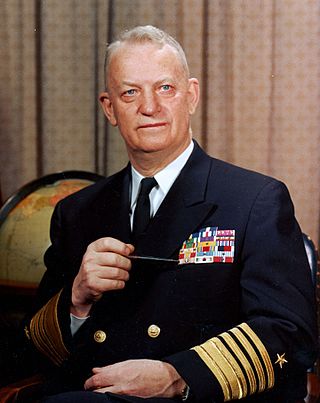
Arleigh Albert Burke was an admiral of the United States Navy who distinguished himself during World War II and the Korean War, and who served as Chief of Naval Operations during the Eisenhower and Kennedy administrations.

Ernest Joseph King was a fleet admiral in the United States Navy who served as Commander in Chief, United States Fleet (COMINCH) and Chief of Naval Operations (CNO) during World War II. He directed the United States Navy's operations, planning, and administration and was a member of the Joint Chiefs of Staff and Combined Chiefs of Staff and was the U.S. Navy's second-most senior officer in World War II after Fleet Admiral William D. Leahy, who served as Chief of Staff to the Commander in Chief.

Vice Admiral Eli Thomas Reich was a highly decorated United States Navy officer and World War II submarine commander — the only one to sink a battleship during the war. He is buried in Arlington National Cemetery.

Glynn Robert Donaho, nicknamed "Donc", was a United States Navy officer known principally for his exploits as a submarine commander during World War II, for which he received the Navy Cross four times, the Silver Star twice, and the Bronze Star Medal.

Paul Werner Wenneker was a German admiral and diplomat who was most notable for serving as the German naval attaché in Japan from 1940 until the end of World War II in 1945. He served as the commanding admiral of German naval forces in Asia, and oversaw the activities of German U-boats and commerce raiders in the waters of the Pacific and Indian Oceans during the war. Wenneker also attempted to share German submarine technology and tactics with the Japanese to assist them in the Pacific War, though his efforts in that regard were mostly treated with indifference by the Japanese. Wenneker also became associated with Richard Sorge and his Soviet spy ring at the German embassy in Tokyo. He was detained by American occupation authorities after the war and then returned to Germany.

Lawson Paterson "Red" Ramage was a vice admiral in the United States Navy and a noted submarine commander during World War II. Ramage was decorated with the Medal of Honor and several other combat decorations during the war. He also served during the Korean War and the Vietnam War.

Rear Admiral Frederick Lois Riefkohl, a native of Maunabo, Puerto Rico, was an officer in the United States Navy and the first Puerto Rican to graduate from the United States Naval Academy and to be awarded the Navy Cross. The Navy Cross is the second highest medal, after the Medal of Honor, that can be awarded by the U.S. Navy for heroism or distinguished service. He was a World War I Navy Cross recipient who served as Captain of the USS Vincennes during World War II.

USS Frost (DE-144) was an Edsall-class destroyer escort in service with the United States Navy from 1943 to 1946. She was scrapped in 1966.

Roy Stanley Benson, nicknamed "Ensign", was a veteran submarine commander in World War II who later served as the Commander Submarine Force U.S. Pacific Fleet (COMSUBPAC) during the Cold War.

Vice Admiral Allan Rockwell McCann, was a United States Navy officer who served in World War I and World War II. His US Navy Serial number was 10829.

Ignatius Joseph "Pete" Galantin was a four-star United States Navy admiral, World War II Navy Cross recipient, and the first commander of the Naval Material Command.
Joint Army–Navy Assessment Committee (JANAC) was a United States inter-service agency set up to analyze and assess Japanese naval and merchant marine shipping losses caused by U.S. and Allied forces during World War II.

James Lemuel Holloway Jr. was a four-star admiral in the United States Navy who served as superintendent of the United States Naval Academy from 1947 to 1950; as Chief of Naval Personnel from 1953 to 1957; and as commander in chief of all United States naval forces in the eastern Atlantic and Mediterranean from 1957 to 1959, in which capacity he commanded the 1958 American intervention in Lebanon. As founder of the Holloway Plan, he was responsible for creating the modern Naval Reserve Officer Training Corps.
Sheldon Hoard Kinney was a U.S. Navy rear admiral who was prominent for action in World War II, the Korean War, Vietnam and later maritime education as Commandant of Midshipmen at the U.S. Naval Academy, President of SUNY Maritime College and as the founder and President of the UN World Maritime University.

Donald Bradford Beary was a vice admiral of the United States Navy. His career included service in both World War I and World War II and a tour as President of the Naval War College. He commanded a wide variety of ships and organizations, and is particularly noted for his leadership during World War II in establishing and directing a large-scale U.S. Navy training program and for his pioneering and highly successful work as a commander of U.S. Navy underway replenishment forces.
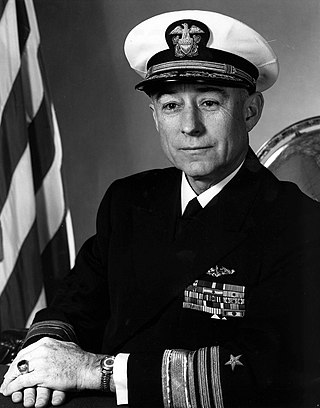
Bernard Lige Austin was a Vice Admiral of the United States Navy. His career included service in World War II, the Korean War, and the Cold War and command of submarines and surface ship forces, during which he became a distinguished combat commander of destroyers. He also commanded the United States Second Fleet, held numerous diplomatic, educational, and administrative staff positions, and a served a lengthy tour of duty as President of the Naval War College.
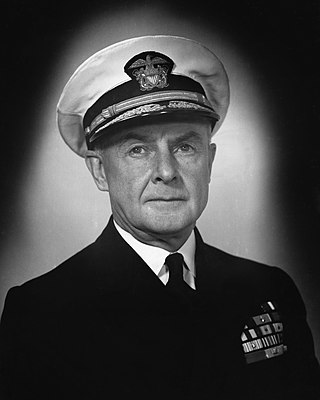
Vice Admiral Frank Jacob Lowry was an officer in the United States Navy who served in World War I and World War II. A 1911 graduate of the United States Naval Academy, he served on submarines during World War I. During World War II, he commanded the cruiser USS Minneapolis at the Battle of the Coral Sea, for which he was awarded the Navy Cross, and the Battle of Midway. He commanded the VIII Amphibious Force in the landings at Anzio and Southern France. He retired from the Navy in March 1950, and received a tombstone promotion to vice admiral due to his combat decorations.
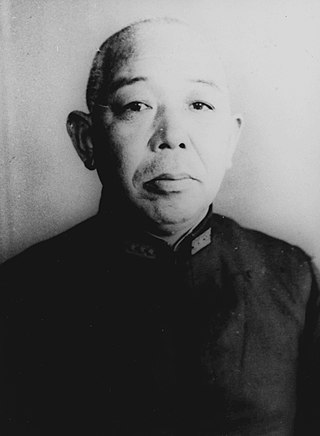
Shiro Kawase was a vice admiral in the Imperial Japanese Navy during World War II. He was a torpedo expert and his extensive experience as a commander of destroyers and destroyer formations made him more knowledgeable about the escort of convoys than most Japanese commanders of his time. He is best known for his command of the 5th Fleet during the latter stages of the Aleutians campaign in the spring and summer of 1943.
Robert Edson "Dusty" Dornin was a United States Navy officer who served in the Pacific Theater of World War II as a very successful submarine commander. He remained in the Navy until his retirement in 1965.
References
 This article incorporates text from the public domain Dictionary of American Naval Fighting Ships .
This article incorporates text from the public domain Dictionary of American Naval Fighting Ships .